Abstract
The study of 52 strains of rapidly growing mycobacteria showed that Mycobacterium fortuitum and M. chelonei were clearly distinguished by the aid of seven key tests (nitrate reductase, iron uptake, beta-glucosidase, penicillinase, growth on fructose, resistance to pipemidic acid, and resistance to capreomycin) and by analysis of their respective mycolic acids. However, the subdivision of these species into M. fortuitum var. fortuitum and M. fortuitum var. peregrinum and M. chelonei subsp. chelonei and M. chelonei subsp. abscessus was not satisfactorily accomplished.
Full text
PDF
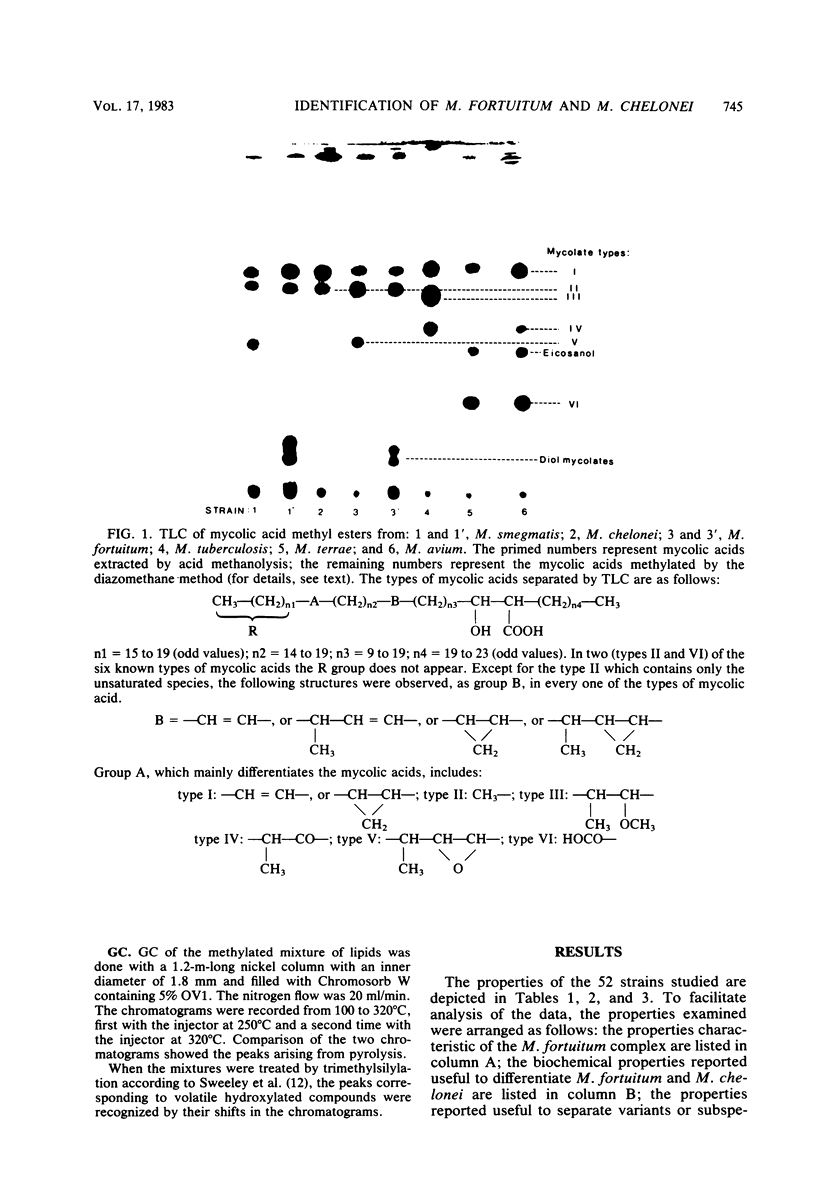
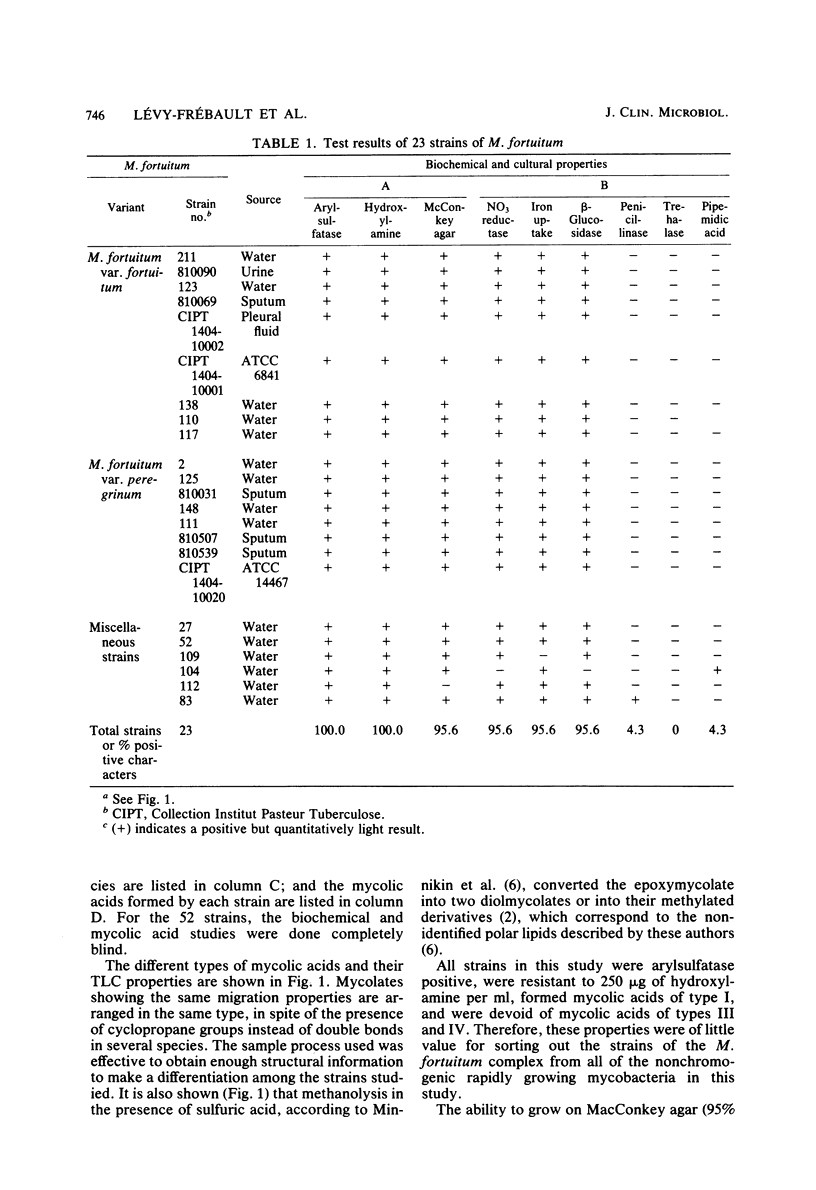

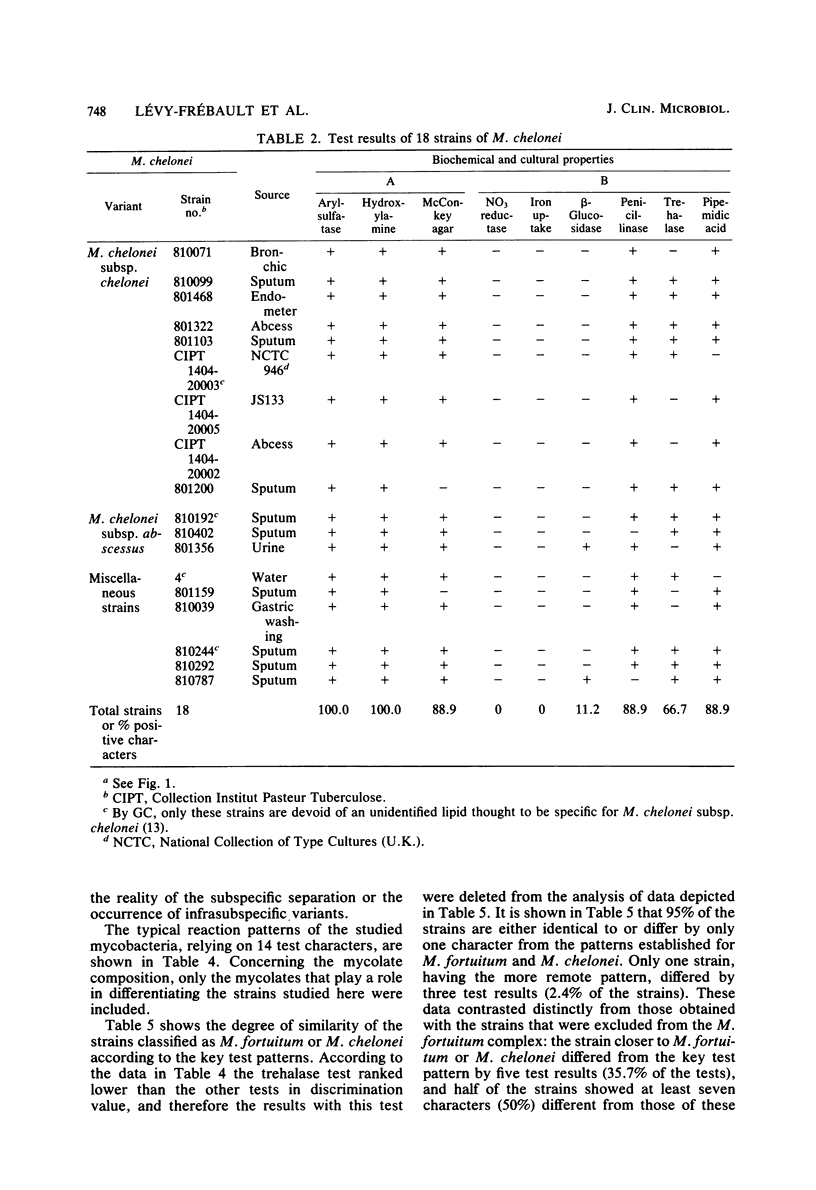
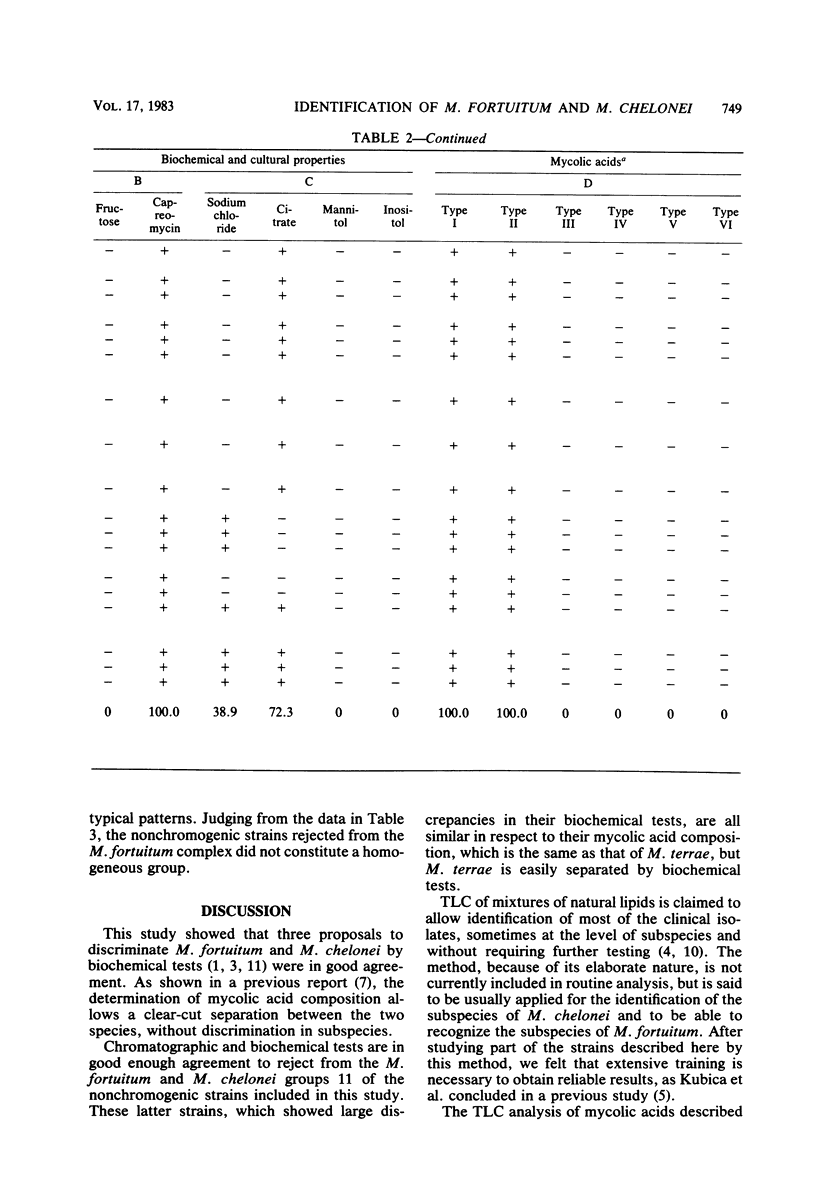


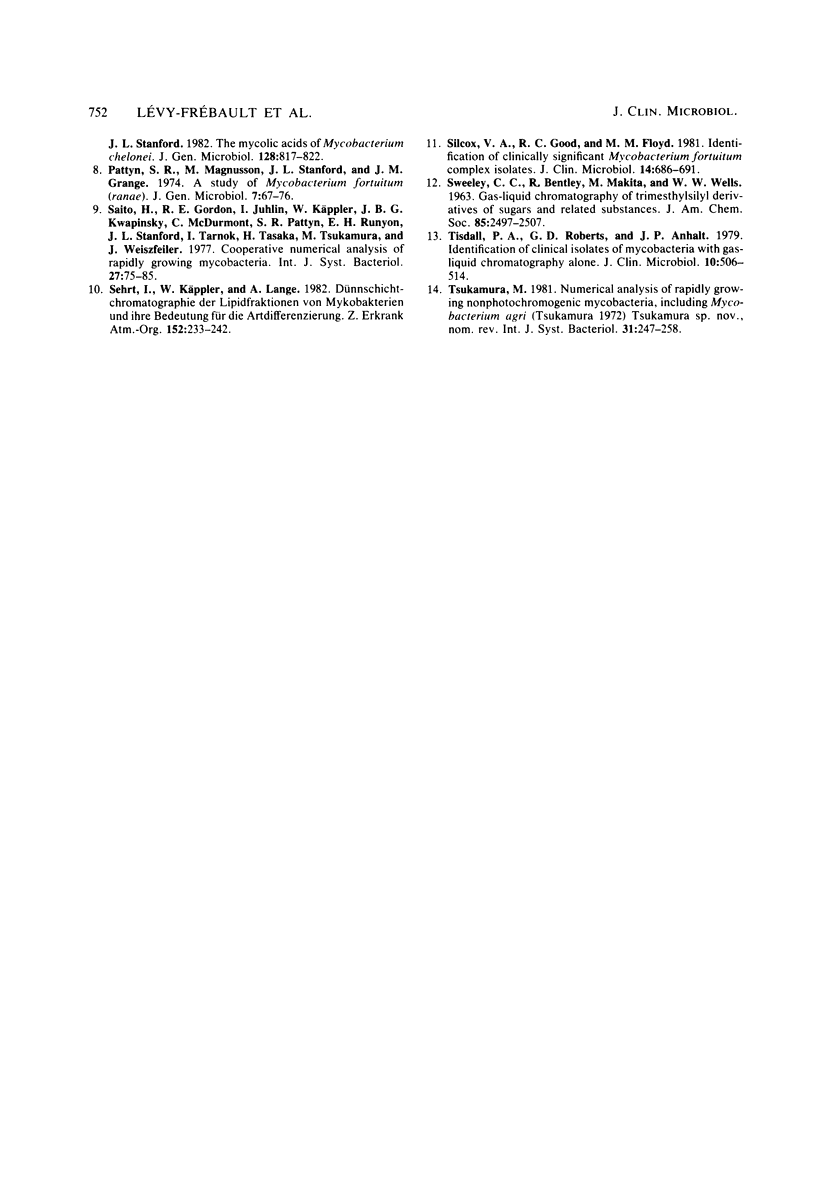
Selected References
These references are in PubMed. This may not be the complete list of references from this article.
- Casal M. J., Rodriguez F. C. Simple, new test for rapid differentiation of the Mycobacterium fortuitum complex. J Clin Microbiol. 1981 May;13(5):989–990. doi: 10.1128/jcm.13.5.989-990.1981. [DOI] [PMC free article] [PubMed] [Google Scholar]
- David H. L., Traore I., Feuillet A. Differential identification of Mycobacterium fortuitum and Mycobacterium chelonei. J Clin Microbiol. 1981 Jan;13(1):6–9. doi: 10.1128/jcm.13.1.6-9.1981. [DOI] [PMC free article] [PubMed] [Google Scholar]
- Jenkins P. A. Lipid analysis for the identification of mycobacteria: an appraisal. Rev Infect Dis. 1981 Sep-Oct;3(5):862–866. doi: 10.1093/clinids/3.5.862. [DOI] [PubMed] [Google Scholar]
- Kubica G. P., Baess I., Gordon R. E., Jenkins P. A., Kwapinski J. B., McDurmont C., Pattyn S. R., Saito H., Silcox V., Stanford J. L. A co-operative numerical analysis of rapidly growing mycobacteria. J Gen Microbiol. 1972 Nov;73(1):55–70. doi: 10.1099/00221287-73-1-55. [DOI] [PubMed] [Google Scholar]
- Minnikin D. E., Minnikin S. M., Goodfellow M., Stanford J. L. The mycolic acids of Mycobacterium chelonei. J Gen Microbiol. 1982 Apr;128(4):817–822. doi: 10.1099/00221287-128-4-817. [DOI] [PubMed] [Google Scholar]
- Pattyn S. R., Magnusson M., Stanford J. L., Grange J. M. A study of Mycobacterium fortuitum (ranae). J Med Microbiol. 1974 Feb;7(1):67–76. doi: 10.1099/00222615-7-1-67. [DOI] [PubMed] [Google Scholar]
- Sehrt I., Käppler W., Lange A. Dünschichtchromatographie der Lipidfraktionen von Mykobakterien und ihre Bedeutung für die Artdifferenzierung. Z Erkr Atmungsorgane. 1982;158(1-2):233–242. [PubMed] [Google Scholar]
- Silcox V. A., Good R. C., Floyd M. M. Identification of clinically significant Mycobacterium fortuitum complex isolates. J Clin Microbiol. 1981 Dec;14(6):686–691. doi: 10.1128/jcm.14.6.686-691.1981. [DOI] [PMC free article] [PubMed] [Google Scholar]
- Tisdall P. A., Roberts G. D., Anhalt J. P. Identification of clinical isolates of mycobacteria with gas-liquid chromatography alone. J Clin Microbiol. 1979 Oct;10(4):506–514. doi: 10.1128/jcm.10.4.506-514.1979. [DOI] [PMC free article] [PubMed] [Google Scholar]


